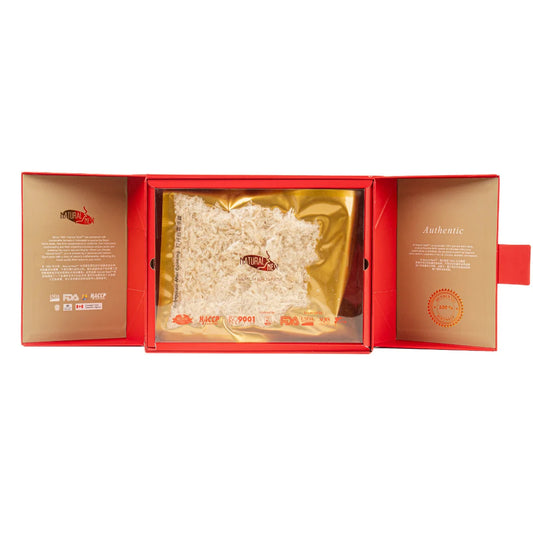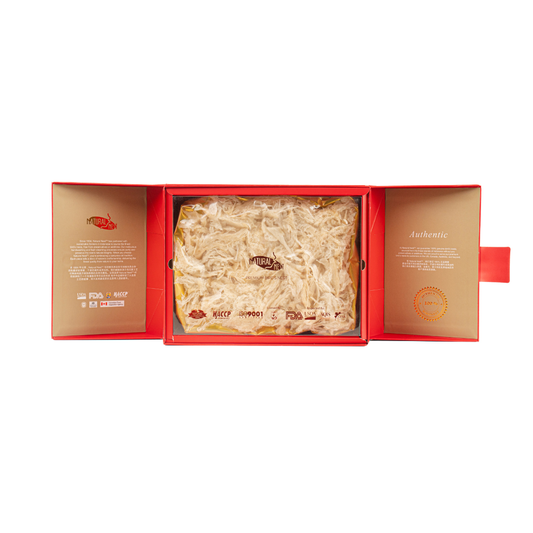Bird nest soup, a delicacy with centuries of cultural significance, is revered in many Asian countries for its unique flavor, texture, and purported health benefits. Made from the edible nests of cave-dwelling swiftlets, this luxurious dish has earned a reputation for being a potent health tonic. Although it is often associated with premium dining and special occasions, bird nest soup’s deep cultural roots and health-promoting properties make it much more than just a culinary indulgence.
1. The Fascinating Origin of Bird Nest Soup
Bird nest soup is primarily made from the nests of Aerodramus fuciphagus, a species of cave-dwelling swiftlet found in Southeast Asia. These birds build their nests using a unique substance—saliva, which hardens when exposed to air. Swiftlets use their saliva to construct their nests, creating a delicate, translucent structure that is prized for its gelatinous texture when cooked.
The nests are harvested, cleaned, and then simmered into a soup, often with the addition of other ingredients like rock sugar or ginseng to enhance the flavor and health benefits. Bird nest soup has been consumed for over a thousand years in traditional Chinese medicine, where it is believed to promote vitality, longevity, and overall wellness.
2. Cultural Significance and Traditional Use
Bird nest soup has deep roots in Chinese, Indonesian, and Malaysian cultures, where it has long been considered a symbol of luxury and good fortune. Historically, it was reserved for royalty and the elite due to its rarity and the difficulty of harvesting the nests. In fact, the harvesting process is highly labor-intensive, with nest collectors scaling steep cliffs and navigating caves to gather the nests. This rarity and labor-intensive nature contribute to its high price, often making it a special dish for celebratory events, such as weddings and birthdays.
In traditional Chinese medicine (TCM), bird nest soup is believed to have various health benefits, particularly for skin health, immune function, and overall vitality. It is often consumed to restore energy, improve digestion, and support respiratory health. For many, it is considered a potent remedy to promote beauty, with claims that it can improve skin elasticity, reduce wrinkles, and promote a healthy, glowing complexion.
3. Health Benefits of Bird Nest Soup
The health benefits of bird nest soup have been celebrated for centuries, though modern scientific research is beginning to provide insights into the potential medicinal properties of its key components.
-
Collagen and Skin Health: Bird nests are rich in collagen, a protein that plays a key role in maintaining skin elasticity and hydration. Collagen is essential for wound healing, and it is often used in anti-aging treatments for its ability to reduce the appearance of wrinkles and improve skin tone. Consuming bird nest soup is thought to support healthy, youthful skin by providing a natural source of collagen.
-
Immune System Support: Bird nest soup is also believed to boost the immune system. It contains a variety of amino acids, antioxidants, and minerals that are thought to help strengthen the body’s natural defenses against illness and disease. Regular consumption of bird nest soup may help improve overall immune function, making it a popular choice during colder months or after illness.
-
Respiratory Health: In TCM, bird nest soup is often prescribed to support respiratory health, particularly in those with conditions like asthma or bronchitis. The high protein and amino acid content in the nests is thought to help soothe the lungs, making it a go-to tonic for respiratory wellness.
-
Digestive Aid: Bird nest soup is also gentle on the digestive system. Its natural properties are said to aid in digestion, improve gut health, and even promote better absorption of nutrients. This makes it a valuable dish for those recovering from illness or in need of digestive support.
-
Anti-Inflammatory and Antioxidant Properties: The amino acids, antioxidants, and trace minerals found in bird nest soup are believed to have anti-inflammatory effects, which can help reduce the risk of chronic diseases and improve overall well-being. These compounds may also support cellular repair, helping to rejuvenate and repair tissues throughout the body.
4. Modern Usage and Accessibility
While bird nest soup was once considered a rare luxury item, it has become more accessible in recent years. Today, it is sold in a variety of forms—ranging from traditional whole nests to pre-packaged soup in jars or ready-to-cook formulas. These modern conveniences make it easier for consumers to experience the benefits of bird nest soup without the need for extensive preparation.
However, due to the high cost of authentic bird nests and concerns over sustainability and ethical harvesting practices, it is important to purchase from reputable suppliers who ensure that the nests are ethically sourced. Some brands are now focusing on eco-friendly and sustainable harvesting methods, which help protect swiftlet populations and their natural habitats.
Conclusion
Bird nest soup is more than just a luxury food item; it is a deeply rooted cultural delicacy with a long history of health benefits. Revered for its collagen content, immune-boosting properties, and ability to support respiratory and digestive health, bird nest soup remains a symbol of vitality and longevity. Whether enjoyed for its traditional significance or its modern wellness benefits, bird nest soup continues to be an important part of many cultures and a valuable addition to any health-conscious diet. As long as ethical and sustainable harvesting practices are prioritized, this ancient tonic will likely continue to play a role in promoting health and beauty for generations to come.












